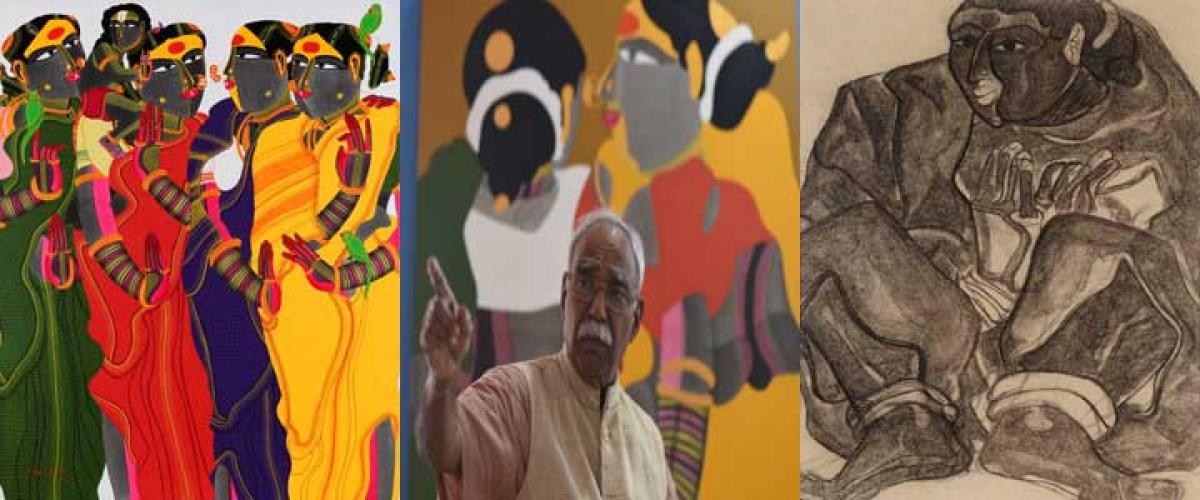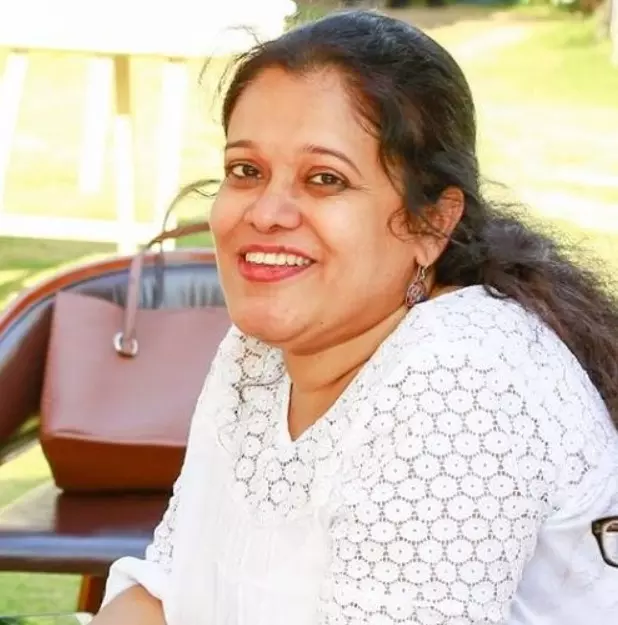Live
- Black Friday 2024: Top Gadget Deals You Can’t Miss – iPhone 16 for Rs 72,900 and More
- Some politicians attempting to divide Hindus for votebank: Former UP Minister
- Bangladesh's Deposed PM Sheikh Hasina Condemns Arrest of Hindu Leader Chinmoy Krishna Das, Demands Immediate Release
- Telangana DGE Revises SSC Exam Fee Payment Schedule for 2025
- ESA Proba-3 Mission Launch on ISRO's PSLV-XL Rocket: December 4, 2024
- MP Priyanka’s debut: Posts featuring Rahul, Kharge win hearts on social media
- 2025 Bollywood Movie Release Dates: Shahid Kapoor’s Deva in January to Alia Bhatt’s Alpha in December
- Shivraj Chouhan tells officials to ensure farmers get high quality fertilisers, seeds and pesticides
- Preamble of Constitution describes India’s collective spirit: Gopalkrishna Gandhi at Constitution Day lecture at JGU
- Centre to offload 25 lakh tonnes of wheat in open market to bring down price
Just In

Telangana, the land which was primarily under the Nizams of Hyderabad through the last century until its integration with the Indian Union, largely contributed to the world of art through the Deccani paintings of yore primarily done for the royalty by court painters – mostly anonymous to the modern world.
Telangana, the land which was primarily under the Nizams of Hyderabad through the last century until its integration with the Indian Union, largely contributed to the world of art through the Deccani paintings of yore primarily done for the royalty by court painters – mostly anonymous to the modern world.
In the 70s when young students from the nooks and corners of the region enrolled themselves into the College of Art in Hyderabad to do a Diploma, and a few ambitious ones went ahead to study art in prestigious institutes like MS University in Baroda; there emerged a new crop of artists, who had their roots strongly embedded in rural Telangana, had seen the new world art, contemporary and modern, interacted with artists from across India and beyond – and whose enthusiasm would not let them be reflection of the established masters or trends of their times.
They were a restless lot, who were constantly at work on the path of self-discovery. Important among them included Laxma Goud, Surya Prakash and a couple of years later Thota Vaikuntham. One common thread that binds these artists is that they chose to chart the same path of art education, all of them studied at Baroda under the watchful eyes of the legendary master of art, KG Subramanian, and returned to Hyderabad to discover their unique self.
Interestingly, during the course of time, each found their own idiom and language in expressing their art, and today, they are internationally acclaimed; their art finds space in the best of art collectors' houses, and art galleries.
Thota Vaikuntham, originally from a village named Boorugupalli, finished his school education in Sircilla. He was introduced into the world of art by the drawing teacher of his school. “Those were the days when sports teacher and drawing teacher would get a lot of importance.
Schools had large grounds where children would be let out to play. Our drawing teacher would collect our art and display them through regular shows. He would also take our works to district level shows. He would encourage us to draw more,” recollects Vaikuntham.
Refusing to follow the set path of studying degree and becoming a teacher, and on an advice of a friend, he chose to study in College of Art, Hyderabad, “Even in Hyderabad, we had wonderful teachers. Vidya Bhushan was the Principal of the college and we had excellent teachers’ like, Kondapalli Seshagiri Rao. They would allow us to explore our skills and guide us well. Yet, what we were mostly doing was reproducing sceneries or still art as students would,” he shares.
From Hyderabad, Vaikuntham was Baroda bound in order to hone his mastery over art and it was towards the end of his student days that he started thinking about his own style and explored in that direction. “I was clear that I did not want to follow others. Even my Guru Mani sir said that it was upto me to find my own way. For a long time, I was unclear on what I wanted to do.
Everyone was doing everything. How can I be different? - was one thought that was troubling me. And, he continued to sketch - “My teacher told me, sketch as much as you can, it will make your art fine, never mind whatever you choose to paint. And do not lose focus on developing your style.”
The world of art, today, knows him for the heavily embellished, beautifully earthy toned dark Telangana women with a big red bindi, his smooth lines and the bold colours – but he has arrived at this signature style after a fair amount of inner struggle and steadfast perseverance.
Vaikuntham had a special affinity towards charcoal as a medium of expression. He loved the ease with which he could sketch using charcoal. One can find many of his earlier works done in charcoal and he continues to dabble with the medium till date. After college, he had to return to his village to attend his mother, who was unwell – and he would draw every day – more from the images that surrounded him, and which have been a part of his growing up.
The uniquely dressed women, their colourful sarees, the way they wore flowers in their hair, their jewellery began fascinating the artist in him. His charcoal drawings included the various villagers engaged in indigenous crafts and livelihoods.
He would draw a wrinkled old man sitting listlessly in a corner, a basket weaver at his work with a brooding expression that is complex and thought-provoking at the same time, a farmer..., “I somehow like my images in charcoal.
Even though my oil paintings in colour are popular, I feel my charcoal drawings reflect the simplicity of village life more poignantly. I cannot explain why, but I feel they are more convincing,” shares the artist, who has dabbled in a variety of medium before finding his calling.
His paintings increasingly began reflecting village folk while drawing inspiration from the colours of rural life – the bright sarees, the bold colours used as backdrops for village street play, the vibrancy of scroll paintings used to narrate stories in his childhood, and his exposure to contemporary art as a student and as an independent artist in later years.
He worked at Jawahar Bal Bhawan as an art teacher, which gave him a lot of time to explore his art. “It is very important to spend a lot of time with yourself and your art. It is only then that you will discover yourself. I value my time at the Bal Bhawan.
Even though the pay was less, I was teaching children and was also spending a lot of time painting, shares Thota Vaikuntham, who brushes aside his days of struggle as the necessary evil of being an artist. “It was my wife, who endured a lot.
I was enjoying my work. And, I would also make some amount when my paintings would sell. It was she, who had to deal with patience as I was not making enough money, and it was difficult to run the house. I think as a woman from a village she took the struggle as a part of life. Anyone else would have run away,” he adds. Vaikuntham has three children – two sons and a daughter.
Art and artists are the ambassadors of culture and identity of people or a region. As far as Vaikuntham was concerned, he was recreating the images that he was surrounded with as a child, who grew up in a village – images of men and women, the colours of rural life, the simplicity and the vibrancy. In the process, he has also been carrying with him, and through his works, the ethnic identity of the region.
Thota Vaikuntham also did art direction for films. He worked for critically acclaimed films like 'Rangula Kala', 'Maa Bhoomi' and 'Daasi'. He won the National Award for the film 'Daasi' produced by B Narsing Rao. In 1993, he received the National Award for art from Central Lalit Kala Akademi.
He belonged to a generation that has its roots in rural India, that enjoys art for art's sake, and continues to work relentlessly and contribute their might to the art world, and in the process have inspired many a young artist.
“We are simple people. Take Laxma Gowd or Surya Prakash – such outstanding artists – every morning they are up and going about their paintings and artworks, even today. They are passionate artists. When I was still a young artist and people would come to Laxma asking him to suggest anyone else from Hyderabad, he would direct them to me. He was very helpful and encouraging. If we were competing – it was with ourselves,” relates Vaikuntham.
Be it his charcoal drawings, his paintings or the sculptures that he makes – there are stunning and simple at the same time, a reflection of the person that he continues to be.
“It is this simplicity and honesty that reflects from his works and that draws people from across the world to his art,” shares curator Manvinder Dawer of India Fine Art Gallery, who has worked for four years collecting Vaikuntham's works from the 70s through 80s until now – from art collectors, galleries, from his own collection and a few from the artist – and curated a special exhibition, “Bhaavanaatharangam - A Retrospective”.
Around 150 works at the exhibition are a celebration of the lifetime of an accomplished artist, and the celebration of Telangana and its ethnic identity. After a successful show in Mumbai, it is now the turn of Hyderabad to witness the elaborate show at Chitramayee State Gallery of Art. Manvinder says, “When we first showcased the works, Vaikuntham sir was very happy to see them.
Even while there was a huge crowd waiting to meet him and see the exhibition, he was moving around looking at his paintings, recollecting memories associated with his works, some of which, he was seeing after tens of years.”
Even as Thota Vaikuntham is soaking in the admiration and celebration of his art, he continues to dream of doing more. “There are a few images from my childhood – of men and women – for example, the men employed by the Zamindars to collect taxes from the farmers and would be ready to threaten and bash up people on the behest of their masters. I would like to recreate these forgotten people through my paintings,” the son of the soil expresses his wish.

© 2024 Hyderabad Media House Limited/The Hans India. All rights reserved. Powered by hocalwire.com







